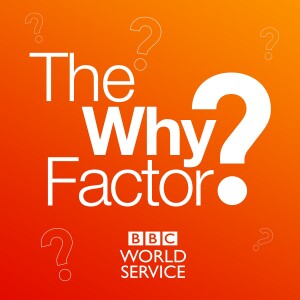
Physical scars can be sources of shame or badges of honour: acquired accidentally or a cry for help. How should we read them, and what do they tell us about ourselves and our place in the world?
We explore the practice of scarification, intentional body modification which has been practised for millennia, where scars denote status within tribal communities and are worn with pride. Brent Kerehona tells us about the type of scarification he has: Ta Moko.
We meet stuntman Andreas Petrides, who has been Obi-Wan Kenobi’s stunt double. He also wears his scars with pride, but for different reasons: they are trophies of his profession.
For millions, scars can be sources of embarrassment. We examine the constructs of beauty that might underpin those feelings. We speak to Hemani Modasia, who suffered scarring from burns to 35% of her body when she was a child, and who wishes, ultimately, she never had them. Scars can also be interpreted as a cry for help, transversing the space between the physical and the deeply emotional. Japanese photographer Kosuke Okahara tells us about his project which captured the scars of Japanese women who suffered from self-harm across a period of 6 years.
Former Vogue editor Jackie Dixon, tells us the fashion industry is now embracing scars - they are part of the zeitgeist. We spoke to Jackie at a photoshoot in central London, where she was photographing a model for a book she is producing that celebrates scars.
The programme also hears from Professor Parashkev Nachev, a neurologist at University College London, and Nichola Rumsey, founder of the Centre for Appearance Research at the University of the West of England. Parashkev tells us the creation of scars is not fully captured by science, suggesting they are both deeply mysterious and profoundly human. Nichola places scars in a social context, and points out they often render us outliers which, for many people, is challenging and uncomfortable.
Presenter: Christopher Gunness
Producer: Oliver Newlan
Editor: Carl Johnston
(Image: Hemani Modasia. Credit: Spencer Murphy for the Scar Free Foundation)
view more
More Episodes
Millennials and business
 2020-02-03
2020-02-03
 2020-02-03
2020-02-03
Why do we text instead of talk?
 2020-01-27
2020-01-27
 2020-01-27
2020-01-27
Dystopias
 2020-01-13
2020-01-13
 2020-01-13
2020-01-13
Victim blaming
 2020-01-06
2020-01-06
 2020-01-06
2020-01-06
Parties
 2019-12-16
2019-12-16
 2019-12-16
2019-12-16
Resilience
 2019-12-09
2019-12-09
 2019-12-09
2019-12-09
Why does music affect the way we feel?
 2019-12-02
2019-12-02
 2019-12-02
2019-12-02
Why do we need to talk about men?
 2019-11-25
2019-11-25
 2019-11-25
2019-11-25
Why grandparents are important
 2019-11-18
2019-11-18
 2019-11-18
2019-11-18
Why do we cheat on our partners?
 2019-11-11
2019-11-11
 2019-11-11
2019-11-11
Why are we conscious?
 2019-11-04
2019-11-04
 2019-11-04
2019-11-04
Why are we conscious of so little?
 2019-10-28
2019-10-28
 2019-10-28
2019-10-28
Why are we shy?
 2019-10-21
2019-10-21
 2019-10-21
2019-10-21
Intuition: Why should we be cautious of it?
 2019-10-14
2019-10-14
 2019-10-14
2019-10-14
Intuition: Why should we trust it?
 2019-10-07
2019-10-07
 2019-10-07
2019-10-07
Why do we love camping?
 2019-09-30
2019-09-30
 2019-09-30
2019-09-30
Why do some people reject society?
 2019-09-23
2019-09-23
 2019-09-23
2019-09-23
Why are we so gloomy about the world?
 2019-09-16
2019-09-16
 2019-09-16
2019-09-16
Why do we (still) wear make-up?
 2019-08-26
2019-08-26
 2019-08-26
2019-08-26
01345678910111213141516171819
Create your
podcast in
minutes
- Full-featured podcast site
- Unlimited storage and bandwidth
- Comprehensive podcast stats
- Distribute to Apple Podcasts, Spotify, and more
- Make money with your podcast
It is Free
- Privacy Policy
- Cookie Policy
- Terms of Use
- Consent Preferences
- Copyright © 2015-2024 Podbean.com



